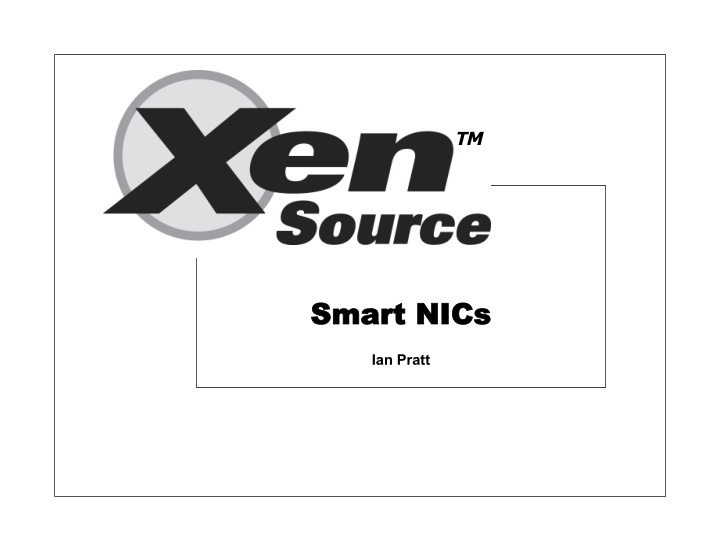



TM Smart NICs Ian Pratt
Smart L2 NIC features Privileged/unprivileged NIC driver model Free/rx/tx descriptor queues into guest Packet demux and tx enforcement Validation of frag descriptors TX QoS CSUM offload / TSO / LRO / intr coalesce
Smart L2 NIC features Packet demux to queues MAC address (possibly multiple) VLAN ttag L3/L4 useful in some environments Filtering Source MAC address and VLAN enforcement More advanced filtering TX rate limiting: x KB every y ms
Design decisions Inter-VM communication Bounce via bridge on NIC Bounce via switch Short circuit via netfront Broadcast/multicast Running out of contexts Fallback to netfront Multiple PCI devs vs. single Card IOMMU vs. architectural
Memory registration Pre-registering RX buffers is easy as they are recycled TX buffers can come from anywhere Register all guest memory Copy in guest to pre-registerered buffer Batch, register and cache mappings Pinning can be done in Xen for architectural IOMMUs, dom0 driver for NIC IOMMUs
VM Relocation Privileged state relocated via xend Tx rate settings, firewall rules, credentials etc. Guest can carries state and can push down unpriv state on the new device Promiscuous mode etc Heterogeneous devices Need to change driver Device independent way of representing state • (more of a challenge for RDMA / TOE)
Design options Proxy device driver Simplest Requires guest OS to have a driver Driver in stub domain, communicated to via netchannel like interface Overhead of accessing driver Driver supplied by hypervisor in guest address space Highest performance “Architectural” definition of netchannel rings Way of kicking devices via Xen
Recommend
More recommend